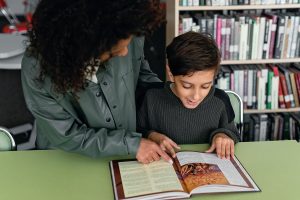Kindergarten 2 is not just about singing songs or playing games—it’s the final stretch before children enter the rigour of primary school, where structured learning and formal assessments begin. This is why kindergarten 2 tuition classes are more than just supplementary lessons—they play a pivotal role in developing early English literacy skills that are crucial for success in Primary 1.
Children in K2 need to be familiar with not only phonics and vocabulary but also reading comprehension, sentence construction, and oral confidence. In a standard kindergarten classroom, these skills might be introduced, but tuition lessons ensure they are practised intensively, mastered through repetition, and refined through guidance tailored to individual learning needs.
By the time your child steps into Primary 1, the expectations are high. They will be asked to read full passages, answer questions in complete sentences, and grasp grammatical rules. Without prior familiarity and practice, the jump can feel overwhelming. That’s where targeted kindergarten 2 tuition classes become indispensable. These sessions break down complex language components and present them in digestible, structured formats children can engage with effectively.
Phonics and Word Recognition as Core Pillars
One of the first areas covered in kindergarten 2 tuition classes is advanced phonics and word recognition. By K2, children should be able to distinguish vowel digraphs, consonant blends, and complex word families. Tuition helps solidify this with multisensory strategies—listening, reading, and speaking exercises that allow children to form connections between sounds and letters confidently.
Teachers in these sessions push learners to go beyond basic CVC (consonant-vowel-consonant) words and into decoding unfamiliar words using sound patterns. This early decoding ability lays the groundwork for fluent reading. When children are exposed to extended phonetic instruction regularly, it becomes second nature, allowing them to transition into Primary 1 English texts with ease.
Reading Comprehension and Text Understanding
Primary English curriculum places a strong emphasis on comprehension skills. Answering inferential questions, sequencing events in a story, and identifying the main idea are common expectations from Primary 1 onward. Kindergarten classes may touch on this, but only structured tuition classes will provide the focused guidance required to build these skills early.
In kindergarten 2 tuition classes, children work with age-appropriate passages designed to stretch their comprehension abilities. These are not random storybooks—they’re selected to align with the literacy levels expected in early primary. More importantly, tutors train children to read with purpose—highlighting, underlining, and asking guided questions to develop critical thinking.
Repeated exposure to such practices ensures children develop not just the ability to read, but to understand, interpret, and respond to what they read—skills that translate directly into higher confidence during classroom tasks and exams.
Grammar and Sentence Construction with Clarity
At Primary 1, children are expected to write proper sentences with correct subject-verb agreement, appropriate punctuation, and basic grammar. Many children enter this level without fully grasping how to string words into coherent ideas. This gap can create unnecessary stress and limit self-expression.
Kindergarten 2 tuition classes address this by introducing grammar in contextualised formats. Instead of memorising grammar rules, students practise writing full sentences, correcting errors, and building short paragraphs. Lessons include grammar puzzles, sentence rearrangement, and hands-on correction drills—all geared towards making grammar intuitive rather than intimidating.
By reinforcing sentence construction regularly, these sessions help children become more expressive, clearer in their writing, and better equipped to complete composition tasks in primary school.
Oral Communication and Vocabulary Development
English isn’t just about writing—it’s also about speaking with clarity and confidence. Primary English assessments include oral reading, picture discussion, and conversational segments. Children who haven’t practised verbal expression may struggle to articulate thoughts under pressure.
Tuition classes incorporate focused oral practice. Children are encouraged to describe scenarios, respond to prompts, and build vocabulary banks that they can recall and use in context. Each lesson provides opportunities to articulate thoughts clearly—whether through storytelling, show-and-tell style sessions, or paired discussions.
This early exposure builds verbal fluency, reduces hesitation, and ensures that students speak with better sentence structure and wider vocabulary once they reach Primary 1.
Customised Feedback and Targeted Support
One of the biggest strengths of kindergarten 2 tuition classes is the personalised feedback children receive. In larger school classrooms, a teacher may not have the time to correct every student’s mistakes in real-time. In tuition settings, however, educators track progress closely, identifying weak areas early and offering targeted drills to improve them.
Whether it’s difficulty with spelling, weak comprehension, or limited vocabulary, each student’s learning path is adjusted to close those gaps before they enter primary school. This customisation makes the tuition more effective and results-driven compared to general classroom instruction.
You can explore these customised learning experiences through structured kindergarten 2 tuition classes that build all key aspects of English proficiency with a long-term goal in mind.
Familiarisation with Primary Curriculum Format
Another often overlooked advantage of K2 tuition is that it introduces the format and rigour of primary-level assessments. Children become familiar with multiple-choice questions, cloze passages, sequencing, and short-answer formats.
This exposure removes the element of surprise once they face formal tests in Primary 1. They walk into their new classroom already knowing what to expect from worksheets and assignments. This familiarity breeds confidence and significantly lowers anxiety, especially during their first few months in primary school.
Additionally, tuition classes often simulate actual classroom activities, so children become accustomed to managing time, following instructions, and independently completing tasks without constant prompting.
Supporting Your Child’s Transition into Primary English
The jump from kindergarten to primary school is a crucial one—and language skills are central to this transition. Without a solid English foundation, children may find themselves struggling to keep up with new concepts, falling behind in subjects taught in English, and losing confidence in their abilities.
Enrolling your child in kindergarten 2 tuition classes ensures that these risks are minimised. With a focus on comprehension, vocabulary, grammar, and oral expression, these lessons equip your child to not just survive—but thrive—in the English-heavy environment of primary education.
What Parents Should Remember
- Start early: Waiting until Primary 1 begins is often too late. K2 is the ideal time to strengthen core English skills.
- Consistency matters: Weekly reinforcement through tuition is far more effective than cramming or sporadic revision.
- Monitor progress: Choose tuition that offers regular feedback and updates so you can track how your child is improving.
- Look beyond marks: The real value is in confidence, clarity of expression, and readiness to handle Primary 1 tasks independently.
Investing in kindergarten 2 tuition classes is one of the most strategic steps you can take to ensure your child enters primary school with a confident, capable command of English. Early preparation sets the tone for long-term academic success—don’t leave it to chance.






More Stories
How to Improve Your Childs Spelling and Grammar
A Guide to Scholarships and Bursaries
Encouraging Good Study Habits in Your Child